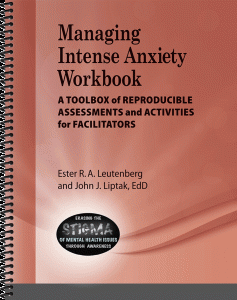What Is Relational-Cultural Theory?
By Judith Jordan, PhD
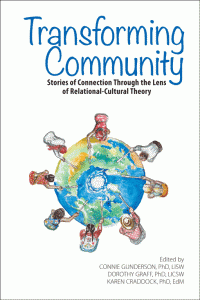 Excerpted from Transforming Community
Excerpted from Transforming Community
Relational-Cultural theory (RCT) posits that we grow through and toward relationships throughout our lives and that growth-fostering relationships are the source of meaning and empowerment. The Five Good Things (Miller & Stiver, 1997) characterize these “good relationships”: (1) zest, (2) clarity, (3) sense if worth, (4) productivity, (5) a desire for more connection. We need connection the way we need air and water. Relationships are central to our lives, not secondary or peripheral. Self-interest is a social prescription rather than a biological imperative.
What has come to be known as Relational-Cultural theory was created in the late 1970s by a collaborative group of four women clinicians (Jean Baker Miller, Irene Stiver, Janet Surrey and myself). Foundational to the model was the work of Jean Baker Miller who wrote her best-selling book Toward a New Psychology of Women in 1976. Seated in Jean’s living room in Brookline, Massachusetts, beneath an antique quilt (undoubtedly the creation of several women from another era with a recognizable pleasure in creating something together) these four women came together to better understand clinical practice and the psychology of women. Jean Baker Miller could see the ways in which theories of personality and development, written by men (mostly white, well-educated, straight men), when applied to women, often led to distortions in understanding. Jean invited us to listen to women, to hear their stories, to understand their needs and motivations, to see strengths where others often saw weakness or deficiency. As we tried to represent women’s voices we sought to understand the impact of race, culture, sexuality, and sociopolitical power issues. Thus began a re-working of the dominant psychological theories of the time. The journey would take us from a celebration of the Separate Self to an appreciation of the centrality of relationships in our lives. Much to our chagrin, critical feedback from marginalized people pointed to the irony that in trying to describe “woman’s voice” we committed the very same hubristic error we had accused male theorists of. We presented our model as if there was one, homogenous voice of women. We have worked hard to listen to and represent the range of experience of women and to move beyond our own white privilege with its incumbent blind-spots (and other sources of unearned advantage such as class, sexual orientation, gender.) We have tried to represent many of the voices of women. We sought to “challenge assumptions of a powerful mythic norm that would define woman as a white, economically privileged, able-bodied, and heterosexual female. Unchallenged, this norm becomes a standard against which all women’s existence is interpreted and evaluated” (Jordan, Walker & Hartling, 2004, p.3).
RCT examined the ways in which chronic disconnections from empathically failing and non-responsive relationships early in life get encoded as relational images which shape our expectations for current relationships. Acute disconnections offer opportunities for re-working earlier relational failures; in fact when we can represent our authentic feelings and find respect, responsiveness, and empathic attunement we build trust and a sense of relational competence. When, however, disconnections are disregarded and a person is treated as if he or she doesn’t matter, she learns to twist herself to fit into the relationships with powerful others in her life (e.g. parents for children; bosses for employees). The misunderstood individual becomes less and less authentic, mutuality ebbs, and the disconnection becomes chronic. In such situations we see depression, low energy, confusion, immobilization, isolating, self-blame; the opposite of The Five Good Things of zest, worth, clarity, productivity, and desire for more connection.
Traditional models of psychological growth at the time that we began our theory building (late 1970s) emphasized that humans move from dependence to independence; that the goal of healthy development is to be able to stand on your own two feet, to be independent, to be rational and autonomous. Unrealistic standards for adulthood left many people, both men and women, feeling inadequate and ashamed. In many ways, the restrictions placed on boys in terms of emotional vulnerability (necessary for the formation of mutual relationships) and demands for unattainable self-sufficiency (to encourage functioning in a hyper-individualistic society) are deeply destructive for boys (Stone, 2011).
In the last decade, modern neuroscience has validated almost all of the early tenets of Relational-Cultural theory: We need relationships like we need air and water; exclusion and isolation create real pain for people; the brain is wired to register the pain of exclusion in the same way it registers physical pain or absence of water and oxygen. We are simply hardwired to connect. We come into the world with the underpinnings of empathic ability (mirror neurons). Just as we need others for survival, we need to give to others and to participate in the growth of others. This model points to the mutuality of human growth. Our inevitable interdependence provides us with a sense of meaning and belonging. When society sets up expectations that are at odds or clash with our neurobiology, when a connection-seeking being is met with cultural conditioning that valorizes self-sufficiency and standing on your own two feet, emotional stress and physical ill health ensue. Chronic stress, resulting from this mismatch wreaks havoc with our overall well-being. We now know that exclusion and isolation cause pain… real, demonstrable neurobiological pain. We know that there is amazing plasticity in the human brain; we also have learned that empathic attunement alters brain function. We are born with an impulse to connect which is not based only on satisfaction of biological needs. We are hard-wired to connect. We need to engage in and participate in relationships that go beyond just needing others to take care of us or resonate with us. We have a need for mutual empathy, resonance; we need to contribute to others. And we need to build community together.
While this work was quite controversial in the late 1970s, modern neuroscience, with its revealing functional MRIs, has confirmed almost every position put forth regarding the power of connection in people’s lives. Social Pain Overlap Theory (SPOT) has demonstrated that the pain of social exclusion (or even the anticipation of exclusion) travels the same neuronal pathways to the same brain area (the anterior cingulate) as physical pain (Eisenberger & Lieberman, 2004). This tells us that relationships are essential to our survival; physical injury and isolation are both wired to demand our attention, to send out survival alarms.
Although initially the model was widely accepted by many female therapists (“It’s what I knew in my heart about therapy and people”), other traditional therapists at first overlooked it, then labeled it “dangerous”, and later often concluded: “We knew it all along. Relationships heal.” While RCT is a relative newcomer to the psychological community, it has gained widespread acceptance, and has engendered a significant amount of research (Jordan, 2010; Jordan, in press). The American Psychological Association invited RCT into its “Psychotherapy monographs series”, noting it was one of the ten most important psychological theories in North America.
While originally anchored in the need to correctly represent the psychology of women and bring about changes in the practice of psychotherapy, RCT has been increasingly applied more widely. A small sampling of RCT research shows it has been used to better understand
- organizational dynamics (Fletcher, 1999)
- counseling theory and practice (Comstock, 2005)
- diversity and marginalization (Comstock et al, 2008; Frey, 2013)
- social justice (Gunderson, 2012; Gunderson, Mueller, & Teichert 2013)
- men (Englar-Carlson, Stevens & Scholtz, 2010; Lombardi, 2011)
- eating disorders (Tantillo & Sanftner, 2010)
- addiction (Covington, 2008; Gahleitner & Gunderson, 2009; Gahleitner & Gunderson, 2007)
- mindfulness (Surrey, 2005; Surrey & Jordan, 2005)
- relational psychotherapy (Jordan, 2010; Walker & Rosen, 2004)
- education (Schwartz & Holloway, 2014)
- mentoring (Gunderson et al, 2015; Spencer, Jordan, & Sazama, 2004)
- empowerment of girls (Covington, 2008; Jordan, 2016)
- friendships (Miller & Stiver, 1997)
- neurobiology of relationship (Banks, 2016)
- couples (Jordan & Carlson, 2013)
- resilience in girls (Jordan, 2013)
- clinical outcome (Oakley et al, 2013)
- chapter representations in college psychology texts (Engler, 2003; Frager & Fadiman, 2012)
- summary of research on RCT’s usefulness in the field of counseling (Comstock, 2008; Duffy & Trepal, 2016).
Many more references to RCT can be found in the forthcoming APA 2nd edition of Relational-Cultural Therapy (Jordan, in press).
In terms of power analyses, RCT suggests that power over models severely restrict the development of mutuality. When people exercise power over, they seek to maintain the status quo, the imbalance of power that affords them considerable privilege in a stratified society. “Power with” and “power for” models provide healthier social arrangements in which all people matter, all people contribute to one another and the relationship and all people grow as a result of their interactions. In empowerment, we participate and value the growth of the less powerful person. The goal is mutual benefit and movement toward a greater sense of the power of connection.
RCT views isolation as one of the core factors in psychological suffering and dysfunction. Re-establishing meaningful connection with others fuels healthy development. As the client experiences empathic responsiveness with the therapist, she feels understood and she also feels less alone. She begins to entertain the possibility of healing and feeling that she matters. Strategies of disconnection begin to shift and the client begins to take small, appropriate risks in bringing vulnerability to relationships. This vulnerability is essential to being open and affected by our relationships with others and hence being able to grow in connection.
References
Banks, A. (2016). Wired to connect. New York: Tarcher/Penguin.
Comstock, D. L., Hammer, T. R., Strentzsch, J., Cannon, K., Parsons, J., & Salazar II, G. (2008). Relational-Cultural theory: A framework for bridging relational, multicultural and social justice competencies. Journal of Counseling and Development 86(3), 279-287.
Comstock, D. (Ed.). (2005). Diversity and development: Critical contexts that shape our lives and relationships. Belmont, CA: Brooks/Cole.
Covington, S. (2008). Women and addiction: A trauma informed approach. Journal of Psychoactive Drugs, 5(3), 377- 385.
Duffey, T., & Haberstroh, S. (2014). Developmental relational counseling: Applications for counseling men. Journal of Counseling and Development, 92(1), 104-113.
Duffy, T., & Trepal, H. (2016). Introduction to the special section on Relational-Cultural theory. Journal of Counseling and Development. 94, 379-382.
Eisenberger, N., & Lieberman, M. (2004). Why rejection hurts: A common neural alarm system for physical and social pain. Trends in Cognitive Sciences. 8, 294-300.
Englar-Carlson, M., Stevens, M., & Scholtz, R. (2010). Psychotherapy with men. New York: Springer.
Engler, B. (2003). Personality theories: An introduction ( 6th ed) . Boston: Houghton Mifflin.
Fedele, N. (2004). Relationships in groups: Connection, resonance and paradox. In J Jordan, M Walker &L Hartling (Eds.), The complexity of connection: Writings from the Stone Center’s Jean Baker Miller Training Institute (pp. 194-219) New York: Guilford Press.
Fletcher, J. (1999). Disappearing acts: Gender, power and relational practice at work. Cambridge, MA: MIT Press.
Frager, R., & Fadiman, J. (Eds.). (2012). Personality and personal growth. New York: Addison Wesley Longman.
Frey, M. (2013). Relational-Cultural therapy: Theory, research and application to counseling competencies. Professional Psychology Research and Practice. 44(3), 177-185.
Gahleitner, S., & Gunderson, C. (Eds.). (2009). Gender, Trauma und Sucht: Neues aus Forschung, Diagnostik und Praxis. Kröning: Asanger Verlag.
Gahleitner, S., & Gunderson, C. (Eds.), (2007). Frauen, Trauma, Sucht: Neue Forschungsergebnisse und Praxiserfahrungen. Kröning: Asanger Verlag.
Gunderson, C. (2012). Human trafficking: The trafficking of women in Northern Germany for the purpose of sexual exploitation. A systemic overview of community based responses and challenges. Münster, Germany: LIT Verlag
Gunderson, C., Müller, A., & Teichert, G. (2013). Zwangsprostitution und Menschenhandel/Sex slavery and human trafficking. Münster, Germany: LIT Verlag
Jordan, J. (in press). Relational-Cultural therapy. (2nd ed.) Washington DC: American Psychological Association.
Jordan, J. (2013). Relational resilience in girls. In S. Goldstein and R. Brooks (Eds.), Handbook of resilience in children (2nd ed.) pp. 73- 86. New York: Springer Science and Business Medico. Jordan, J. (2010). Relational-Cultural Therapy. Washington, DC American Psychological Association.
Jordan, J., Kaplan, A., Miller, J., Stiver, I., & Surrey, J. (1991). Women’s growth in connection. New York: Guilford.
Jordan, J., Walker, M., & Hartling, L. (Eds.). (2004). The complexity of connection. New York: Guilford.
Lombardi, K. ( 2011). The mama’s boy myth. New York: Penguin.
Miller, J. (1976). Toward a new psychology of women. Boston: Beacon Press.
Miller, J., & Stiver, I. (1997). The healing connection: How women form relationships in therapy and in life. Boston: Beacon Press.
Norcross, J. (Ed.). (2002). Psychotherapy relationships that work: Therapist contributions and responsiveness to patient. New York: Oxford University Press.
Oakley, A., Addison, S.C., Piran, N., Johnston, G., Damianakis, M., Curry, J., …(2013). Outcome study of brief relational-cultural therapy in a women’s mental health center. Psychotherapy Research, 23(2), 137-151.
Schwartz, H. (2014). “ I become part of the learning process”: Mentoring episodes and individualized attention in graduate education. Mentoring and Tutoring: Partnership in Learning, 22(1), 3855.
Sparks, E. (1999). Against the odds: Resistance and resilience in African American welfare mothers. Work in Progress, No 81. Wellesley,MA: Stone Center Working Paper Series.
Spencer, R., Jordan, J., & Sazama, J. (2004). Growth –promoting relationships between youth and adults: A focus group study. Families in Society, 7(3), 354-363.
Surrey, J. (2005). Relational psychotherapy, relational mindfulness. In C. Germer, R. Siegel, & P. Fulton (Eds.), Mindfulness and psychotherapy, (pp. 91-110). New York: Guilford Press.
Surrey, J., & Jordan, J. (2013). The wisdom of connection. In C. Germer, R. Siegel (Eds.), Wisdom and compassion in psychotherapy: Deepening mindfulness in clinical practice. (pp. 163-175). New York: Guilford Press.
Tantillo, M., & Sanftner, J. (2010). Measuring perceived mutuality in women with eating disorders: The development of the Connection-disconnection scale. Journal of Nursing Measurement, 18(2), 100- 119.
Walker, M., & Rosen, W. (Eds.). (2004). How connections heal: Stories from Relational-Cultural therapy. New York: Guilford Press.
Like this:
Like Loading...
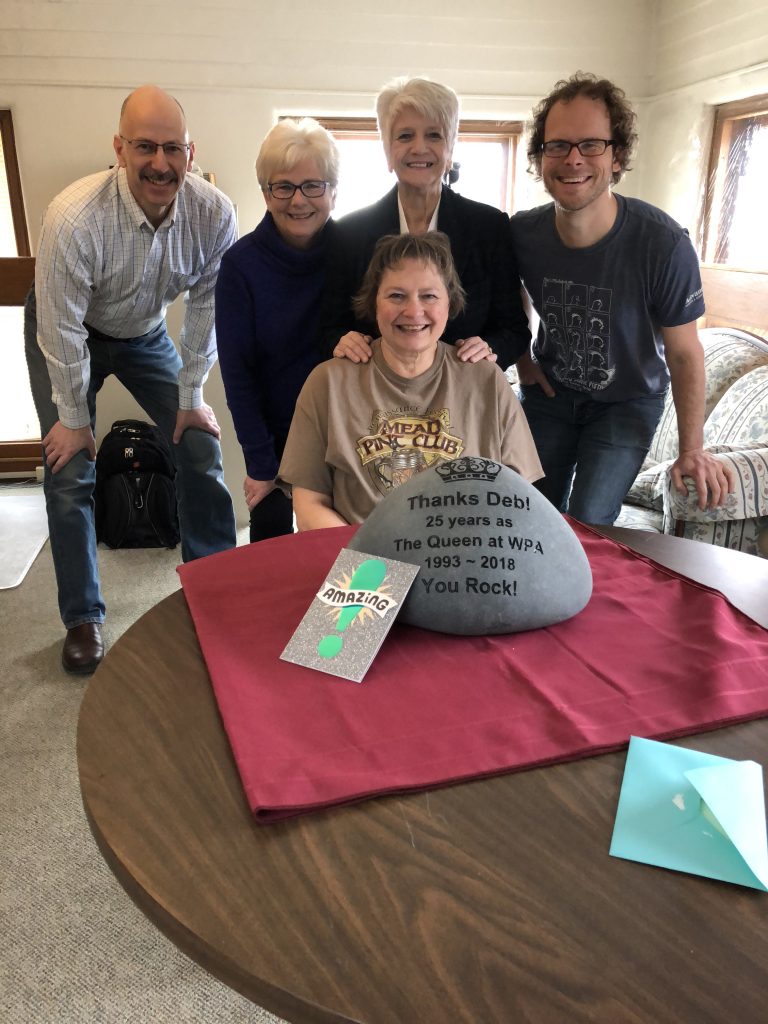

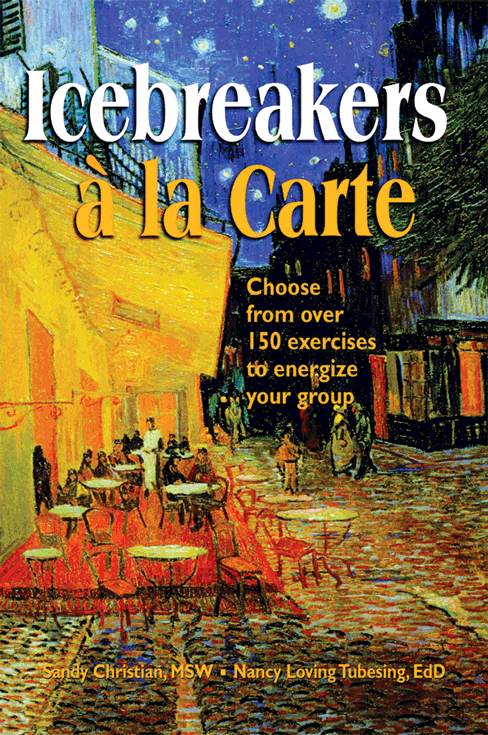

 While we wait for the courts to catch up with reality here are two exercises, from the book
While we wait for the courts to catch up with reality here are two exercises, from the book 
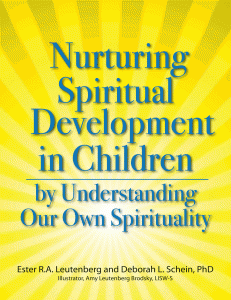
 I was co-writing a book about spirituality and on the way to a restaurant with friends, I asked the husband if he was religious, spiritual, spiritual and religious, or none of them. He gave me a confused look, and said, “What is spirituality?” I told him that it is different for everyone. I said, “For me, when I look at the mountains beyond my backyard, I have a sense of wonderment, of being a small part of the universe. It swells my heart.” His response was, “I have no idea what you are talking about.” We enjoyed our dinner, saying no more about it.
I was co-writing a book about spirituality and on the way to a restaurant with friends, I asked the husband if he was religious, spiritual, spiritual and religious, or none of them. He gave me a confused look, and said, “What is spirituality?” I told him that it is different for everyone. I said, “For me, when I look at the mountains beyond my backyard, I have a sense of wonderment, of being a small part of the universe. It swells my heart.” His response was, “I have no idea what you are talking about.” We enjoyed our dinner, saying no more about it. 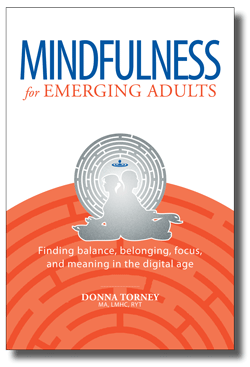


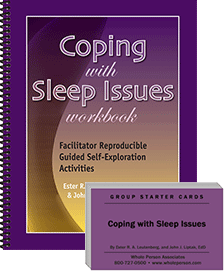 A book such as
A book such as  Most researchers define mindfulness to include these two main components:
Most researchers define mindfulness to include these two main components:
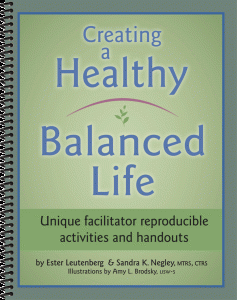
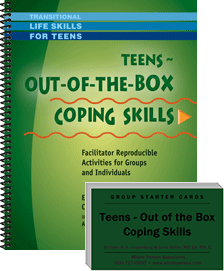 Excerpted from Teens ~ Out-of-the-Box Coping Skills
Excerpted from Teens ~ Out-of-the-Box Coping Skills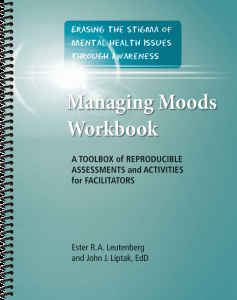
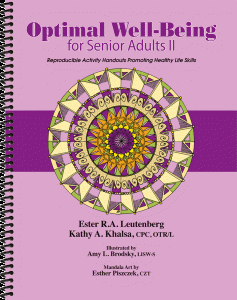 Here is a list of things you will need to know for your appointment:
Here is a list of things you will need to know for your appointment: